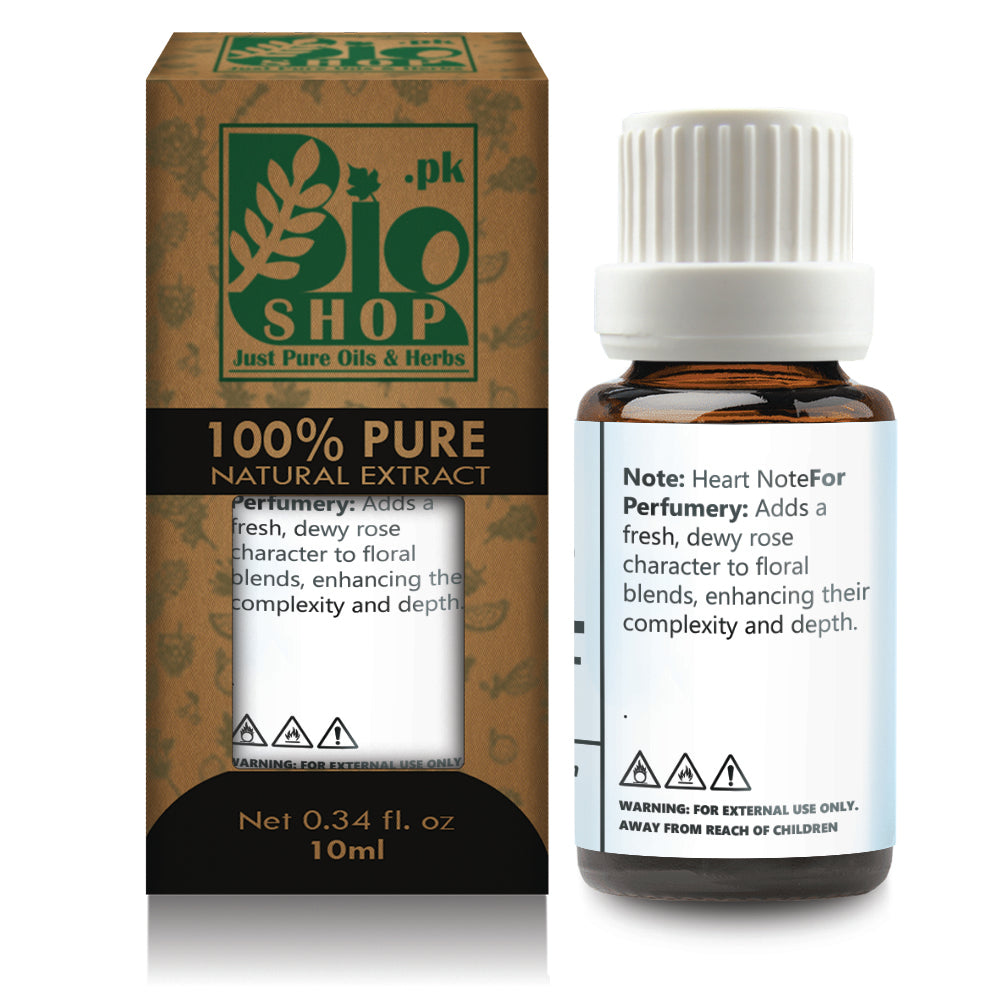Bio Shop
Rhodinol
Rhodinol
Olfactory Notes: Rose, Geranium, Fresh, Green, Minty, Slightly Citrus, Floral
Couldn't load pickup availability


Explore
Information About Rhodinol
Key Features
- Delivers natural rose-geranium freshness to floral perfumes
- Essential for rose, peony, muguet, and herbaceous floral blends
- Adds freshness, volume, and realism to heart and top notes
- Perfect for perfumery, attars, body sprays, and personal care
- Excellent in both modern and classical floral structures
About Rhodinol
Rhodinol is a naturally derived rose-like aroma chemical that delivers a beautiful balance of fresh rosy, geranium, minty, and citrus-green facets. It is one of the key components found in geranium oil and rose oil, making it an essential building block in floral perfumery—especially in rose, muguet, peony, and green floral compositions.
Rhodinol softens and rounds out floral notes, adds freshness, and lifts top and heart accords. It works beautifully alongside Citronellol, Geraniol, Linalool, and Rose Wardia to create naturalistic and long-lasting floral accords.
Technical Data
INCI Name: Rhodinol
CAS Number: 141-25-3
Molecular Formula: C10H20O
Appearance: Clear to pale yellow liquid
Odor Description: Rosy, fresh, geranium-like, minty, citrusy
Purity: ≥98%
Melting Point: < −20°C
Boiling Point: ~225°C
Flash Point: ~93°C
Density: ~0.87 g/cm³
Solubility: Soluble in alcohol, oils, and DPG
Recommended Usage: 0.5% – 5% in final blend
Category: Floral Modifier – Heart/Top Note – Perfumery Use
Application Tips
Use 1–4% Rhodinol in rose, peony, or herbal floral perfumes. Pair with Citronellol and Geraniol to build natural rosy accords. Works beautifully in attars, alcohol perfumes, deodorants, and body lotions for fresh elegance.
Pro Tip
💡 Crafting a natural rose accord? 🌹🍃 Add 2–3% Rhodinol with Citronellol and Rose Wardia for a crisp, green-fresh floral core that smells realistic and long-lasting—great for modern florals and body mists! 💐💧
FAQ
Q1: Is Rhodinol natural or synthetic?
Rhodinol is a naturally occurring compound in rose and geranium oils, but it's also available as a high-purity isolate for consistent perfumery use.
Q2: What does Rhodinol smell like?
It smells fresh, rosy, and slightly minty—like a mix of rose and geranium with green citrusy edges.
Q3: Can I use this in roll-ons and sprays?
Yes, it's perfect for attars, mists, and alcohol-based perfumes. It blends smoothly in both oil and alcohol systems.
Q4: What types of perfumes does it suit?
Ideal for floral, green, peony, muguet, herbaceous, and rose-focused compositions.
Q5: Can it replace rose oil?
While not a direct replacement, it significantly enhances rose impressions at a fraction of the cost.
Documentation
Upon request, we will provide.
Where Can You Safely Use Rhodinol?
Discover how Rhodinol performs across different applications—rated for safety, stability, and effectiveness.



